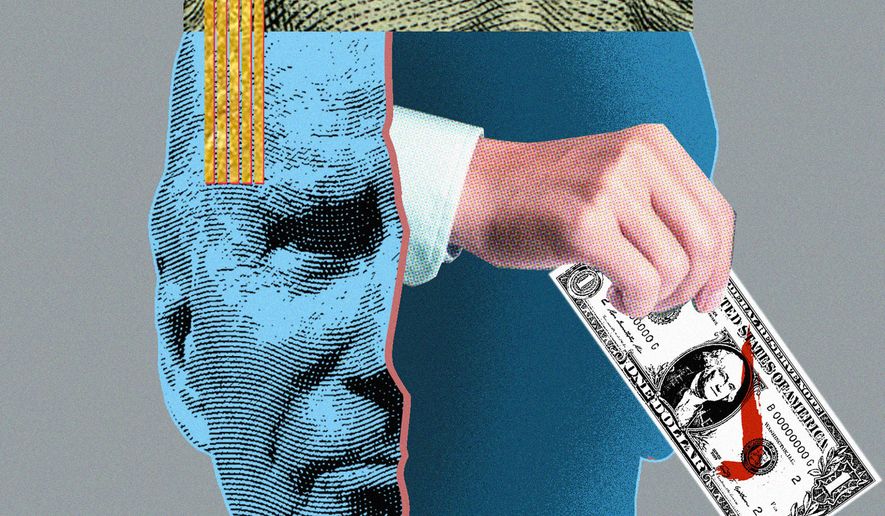OPINION:
“I think the court misinterpreted the Constitution,” President Biden said defiantly on Friday after the Supreme Court ruled he overstepped his authority by relieving student loan debt.
In an effort to buy votes in 2022, Mr. Biden hastily issued an executive order canceling up to $20,000 in debt to Pell Grant recipients with loans held by the Department of Education and up to $10,000 in debt cancellation to non-Pell Grant recipients. The Supreme Court ruled the unilateral decision to cancel $430 billion in debt for 43 million borrowers unconstitutional.
“Congress opted to make debt forgiveness available only in a few particular exigent circumstances,” Chief Justice John Roberts said in the decision, adding that none applied in Mr. Biden’s case. He said that Mr. Biden’s use of “waiver power” was far more excessive than that of any other president in history, with Mr. Biden’s executive branch stepping on the responsibilities of the legislative branch.
The Constitution reserves the power of the purse to Congress, as expressed in Article I, the court ruled.
Even then-House Speaker Nancy Pelosi recognized this fact in July 2021. “People think that the president of the United States has the power for [student loan] debt forgiveness. He does not,” she said at the time.
Besides being illegal, Mr. Biden’s plan was fiscally irresponsible and would have become a handout to the wealthy, doing nothing to lower the cost of higher education.
Canceling student debt would worsen economic inequality as nearly two-thirds of all student debt is owed by the top 40% of households with advanced degrees, such as doctors and lawyers. Adam Looney, a senior fellow at the Brookings Institution, called a blanket loan cancellation “a tax cut for high-income, college-educated households.”
According to the Penn Wharton Budget Model, Mr. Biden’s student loan bailout “could [have] exceed[ed] $1 trillion,” with the majority of the benefits going to the top 60% of earners.
Meanwhile, middle-class households, who decided not to pursue higher degrees because of the cost, or opted for trade school, would be saddled with the bill. The National Taxpayers Union Foundation predicted that Mr. Biden’s bailout would have burdened the average taxpayer with roughly $2,500.
When hearing about the trade-offs, 76% of Americans oppose student debt cancellation if it drives up the price of college, which some analysts expect, and 64% oppose it if it raises taxes, according to a Cato 2022 student debt cancellation national survey conducted last year.
“Forgiving student loans is unfair to students who have paid off their loans; unfair to students who have chosen less expensive community college options; unfair to taxpayers whose dollars are paying off the loans and who have no college education,” said Diana Furchtgott-Roth, the former chief economist at the Department of Labor.
Even liberal economists like Larry Summers and Jason Furman said that canceling student debt would increase already high inflation.
Mr. Furman, a former top economic adviser to former President Barack Obama, said of Mr. Biden’s plans: “Pouring roughly half trillion dollars of gasoline on the inflationary fire that is already burning is reckless.”
Still, Mr. Biden views canceling student debt as a campaign promise and has vowed to pursue other options to make it happen — constitutionality be damned. He also has taken no responsibility for giving his base the false hope their debts would be absolved.
“I didn’t give any false hope. The question was whether or not I would do even more than was requested. What I did, I thought was appropriate and was able to be done and would get done,” he said. “But the Republicans snatched away the hope that it was — they were given.”
Alas, the student loan cancellation debate will likely head back to the Supreme Court, and Republicans will need to confront it on the campaign trail in 2024 for what it is — a bailout to the wealthy at the expense of the working class.




Please read our comment policy before commenting.